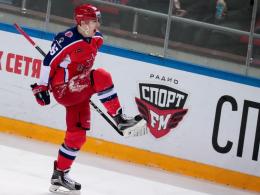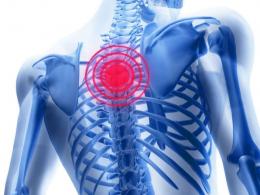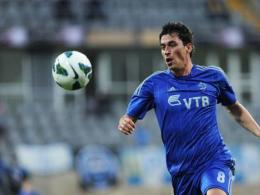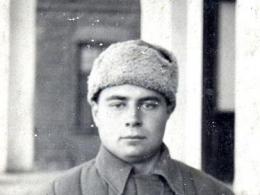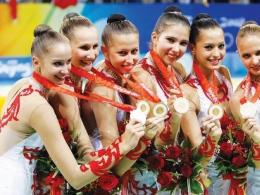Olympic tests in physical culture. Online Olympiads in physical education. B) Leonid Tyagachev
Sections: Sports at school and children's health
Our Olympiad is dedicated to the sacred Olympic Games in Hellas. Games in Hellas originated as religious holidays, as holidays of peace and friendship between individual city-states. The enormous scope of the Holy Olympic Games is understandable and explainable. Constant wars required the training of strong, hardy warriors, and the entire system of physical education of that time was subordinated to this. Warriors could show their strength, endurance, and ingenuity in a peaceful environment only at celebrations and festivities. Thus, the Holy Olympic Games over time became a kind of review of physical education in Hellas.
Ancient culture gave humanity the Holy Olympic Games - one of the creations of the genius of the Greek people.
Dear friends! We invite you on an exciting journey into the world of Olympic culture, a journey through time and space. On your journey, you will definitely have the opportunity to experience the joy of meeting whole and harmonious Hellenes, immortal and humanized gods, fearless heroes and courageous warriors, participants and winners of the Holy Olympic Games.
The tasks are presented in a closed form, that is, with suggested answer options. The selected options are marked by crossing out the corresponding letter on the answer form: “a”, “b”, “c” or “d”.
We advise you to complete the tasks in the order in which they are given. To save time, skip tasks that cannot be completed immediately and move on to the next one. If you have time left after completing all the tasks, you can return to the questions you missed.
Read the tasks and suggested answer options carefully. Try not to guess, but to logically justify your choice. Skip unfamiliar tasks instead of completing them by guessing. This will save time for other tasks. You can later return to the missed task.
For each correct answer, 3 to 5 points are given.
When performing a creative task, you must have colored pencils with you.
The creative task is assessed as follows:
- One drawn symbol in color – 3 points.
- Two drawn symbols in color – 4 points.
- Three drawn symbols in color – 5 points.
Monitor task completion time.
The task completion time is 20 minutes.
We wish everyone good luck!
Question No. 1. Where were the Sacred Olympic Games born?
A. In Ancient Greece
B. In Ancient Rome
B. In Ancient China
G. In Ancient Rus'
Question No. 2. In which city of Ancient Greece were the Holy Olympic Games held?
A. Megalopoli
B. Olympia
V. Smyrna
Athens
Question No. 3. Who was the main god of the Olympians?
B. Poseidon
Question No. 4: Who had the right to participate in the Holy Olympic Games?
A. Women
B. Men
B. Women and men
Question No. 5. What is the frequency of the Holy Olympic Games?
A. Once every 2 years
B. Once every 4 years
B. Once every 5 years
D. Once every 7 years
Question No. 6. What were the winners of the Holy Olympic Games called?
A. Orchestrikami
B. Palestrikami
V. Olympionists
G. Champions
Question No. 7. What were the winners of the Holy Olympic Games awarded with?
A. Wreaths from apple tree branches
B. Wreaths from plum branches
B. Wreaths of sacred olive branches
G. Wreaths from pear branches
Question No. 8. What were the judges called at the ancient Olympic Games?
A. Ellanodikami
B. Consuls
V. Legists
G. Erasistrators
Question No. 9. Who was the first winner of the Holy Olympic Games?
A. Voroibos
B. Moroibos
V. Koroibos
G. Soroibos
Question No. 10: Who was the last winner of the Holy Olympic Games?
A. Varazdat
B. Marazdat
V. Sarazdat
Question No. 11. What was the name of the pentathlon in Ancient Greece?
A. Pentattle
B. Triatl
B. Eptatol
G. Decathlon
Question No. 12. What were the names of the special premises for preparing athletes for the ancient Olympic Games?
A. Gymnasium
B. Palestra
V. Palaestra and Gymnasium
G. Ristalische
Question No. 13: What traditions of the Sacred Olympic Games are used in the modern Olympic Games?
A. Lighting of the Olympic flame
B. Opening and Closing Ceremonies of the Games
B. Pronunciation of the oath by athletes and judges
D. All of the above
Creative task. Choose the symbols of the Holy Olympic Games from the proposed list, draw and color them with colored pencils?
A. Olympic flame
B. Sacred Olive Wreath
B. Olympic fireworks
Answer form
| Question No. 1 | A | B | IN | G |
| Question No. 2 | A | B | IN | G |
| Question No. 3 | A | B | IN | G |
| Question No. 4 | A | B | IN | G |
| Question No. 5 | A | B | IN | G |
| Question No. 6 | A | B | IN | G |
| Question No. 7 | A | B | IN | G |
| Question No. 8 | A | B | IN | G |
| Question No. 9 | A | B | IN | G |
| Question No. 10 | A | B | IN | G |
| Question No. 11 | A | B | IN | G |
| Question No. 12 | A | B | IN | G |
| Question No. 13 | A | B | IN | G |
| Creative task | Students can draw one symbol of the Holy Olympic Games, or several. | |||
Answer key
| Question no. | Correct answer | Issue cost |
| Question No. 1 | A | 3 |
| Question No. 2 | B | 3 |
| Question No. 3 | A | 4 |
| Question No. 4 | B | 3 |
| Question No. 5 | B | 3 |
| Question No. 6 | IN | 5 |
| Question No. 7 | IN | 4 |
| Question No. 8 | A | 5 |
| Question No. 9 | IN | 5 |
| Question No. 10 | A | 5 |
| Question No. 11 | A | 4 |
| Question No. 12 | IN | 5 |
| Question No. 13 | G | 4 |
| Creative task |
|
One
drawn symbol in color – 3 points.
Two drawn symbols in color – 4 points. Three drawn symbols in color – 5 points. |
Tests of the Special School Olympics in Physical Education
For students of ___ grade
Date: __________ Last name, first name _______________________
Age group: _________ The competition task consists of 20 questions.
Time: 60 minutesNumber of correct answersthere may be more than one!
Section 1. Health and healthy lifestyle
1. What is the name of the condition when there are no diseases or physical disabilities?
(1) health
(2) hardening
(3) physical development
2. What components are included in a healthy lifestyle?
(1) rational nutrition;
(2) hardening of the body and optimal motor mode;
(3) playing computer games.
3. What determines the state of a person’s posture?
(1) from power
(2) from body position during different work
(3) depending on weather conditions
4. What indicators determine the physical development of a person?
(1) growth
(2) flexibility
(3) weight
5. What consequences may occur to smokers during exercise?
(1) coordination of movements is impaired
(2) breathing is impaired
(3) blockage of blood vessels
6. What techniques relate to hardening?
(1) rubdown
(2) ice skating
(3) dousing
Section 2. Sports theorist
7. What qualities are developed in outdoor games?
(1) determination
(2) economy
(3) discipline
8. What is sports equipment?
(1) wall bars, rope, shuttlecock;
(2) bicycle, shuttlecock, skates;
(3) crossbar, rope, wall bars;
9. What is the lightest piece of equipment for sports?
(1) tennis ball
(2) badminton shuttlecock
(3) tennis ball
10. What do figure skating and roller skating have in common?
(1) skates (2) equipment (3) ice activities
Section 3. Sports practitioner
11. In what case in basketball will the referee call free throws?
(1) when a player loses the ball;
(2) when the ball hits spectators;
(3) if the attacker was shooting at the hoop, and the defender interfered with him, hitting his hand;
12. What equipment is not used in rhythmic gymnastics?
(1) tape
(2) dumbbells
(3) mace
13. What rule must be followed after running exercises?
(1) sit on a bench;
(2) use weight-bearing exercises;
(3) continue walking.
14. In what team sports are the number of players on the court five?
(1) basketball
(2) volleyball
(3) mini football
15.What term refers to football?
(1) foul
(2) penalty
(3) false start
Section 4. From the history of sports and the Olympic movement
16. Birthplace of the Olympic Games
(1) America
(2) Greece
(3) Italy
17.How many rings are there on the Olympic emblem?
(1) 3
(2) 5
(3) 4
18.Motto of the Olympic Games:
1. “Sport, sport, sport!”
2. “Oh sport! You are the world!
3. “Faster! Higher! Stronger!"
(1) P. Coubertin
(2) P. Lesgaft
(3) King Solomon
20. In which Russian city was the Winter Olympics held in 2014?
(1) Moscow
(2) St. Petersburg
(3) Sochi
Answers to assignments
(age group “__class”)
Question number | ||||||||||
Answer | ||||||||||
Question number |
Physical education tests.
1. The oldest form of organization of physical culture was:
B) martial arts
B) chariot competitions
D) games
2.The physical culture of the slave society had:
A) applied focus
B) military and health orientation
B) educational orientation
D) educational orientation
3.The Russian Olympic Committee was created in
a) 1908
b) 1911
c) 1912
d) 1916
4.Alexander Popov – Olympic Champion in...
A) swimming
B) athletics
B) cross-country skiing
D) cycling
5.Which of the following events is not included in the modern pentathlon program
A) shooting
B) fencing
B) gymnastics
D) horse riding
6.Why were the ancient Olympic Games called holidays of peace?
A) the games were peaceful in nature
B) wars stopped during the games
C) athletes from all over the world took part in the Olympic Games
D) The Olympic Games were world famous
7.What type of program was the program of the first Olympic Games of Ancient Greece?
A) javelin throwing
B) fight
B) running one stage
D) four-stage race
8.What was the name of the type of sports program of the ancient Olympic Games that combined wrestling with fist fighting?
A) dolichodrome
B) pankration
B) pentathlon
D) diaul
9.Which organization leads the modern Olympic movement?
A) United Nations
B) International Council of Physical Education and Sports
B) International Olympic Committee
D) International Olympic Academy
10.Who was the first president of the International Olympic Committee?
A) Pierre de Coubertin
B) Alexey Butovsky
B) Michael Killanin
D) Demetrius Vikelas
11.Who became the first Olympic champion among Russian athletes?
A) N. Orlov
B) A. Petrov
B) N. Panin - Kolomenkin
D) A. Butovsky
12.Why does the Fair Play movement award the honorary Pierre de Coubertin prize?
A) for fair refereeing
B) for victories at three Olympics
B) for an honest and fair fight
D) for his great contribution to the development of the Olympic movement
13. Who is the current president of the Russian Olympic Committee?
A) Shamil Tarpishchev
B) Vyacheslav Fetisov
B) Leonid Tyagachev
D) Vitaly Smirnov
14. At the opening of the Olympic Games, the parade of Olympic delegations of the participating countries opens (goes first):
A) delegation of the organizing country
C) delegation of the country that organized the previous Olympiad
D) Greek delegation
15. At the opening of the Olympic Games, the parade of the Olympic delegations of the participating countries ends (comes last):
A) delegation of the organizing country
B) delegation of a country whose name begins with the first letters of the alphabet of the organizing country
c) delegation of the organizing country of the previous Olympics
d) delegation of Greece
16.In what year was the International Olympic Committee founded?
B) 1894
17.The term “Olympiad” means:
A) a four-year period between the Olympic Games
B) the first year of the quadrennial, the onset of which is celebrated by the Olympic Games
B) synonymous with the Olympic Games
D) competitions held during the Olympic Games
18. In what year did the Olympic Games take place in our country?
A) were planned in 1944, but were canceled due to World War 2
B) in 1976 in Sochi
B) in 1980 in Moscow
D) have not yet been carried out
19.What disciplines included the pentathlon - the ancient Greek pentathlon?
1.fist fighting 2.horse riding 3.long jump 4.high jump
5.discus throwing 6.running 7.archery 8.wrestling
9.swimming 10.javelin throwing
B)3,5,6,8,10
20.Pierre de Coubertin was awarded an Olympic gold medal at an art competition in...
A) in 1894 for the draft Olympic Charter
B) in 1912 for “Ode to Sports”
B) in 1914 for the flag donated by Coubertin to the IOC
D) in 1920 for the text of the Olympic Oath
21.The Olympic symbol consists of five intertwined rings arranged from left to right in the following order...
A) at the top - blue, black, red, at the bottom - yellow and green
B) above - green, black, red, below - blue and yellow
C) at the top - red, blue, black, at the bottom - yellow and green
D) above - blue, black, red, below - green and yellow
22.The Olympic Games consist of...
A) competitions between countries
B) competitions in winter or summer sports
B) winter and summer Olympic Games
D) opening, competitions, rewarding of participants and closing
23.What were the names of the special rooms for preparing athletes for the ancient Greek Olympic Games?
A) palaestra
B) amphitheater
B) gymnasium
D) stadium
24.The mascot of the Olympic Games is:
A) image of the Olympic flag
B) image of five intertwined rings
C) an image of an animal popular in the country hosting the Olympics
D) an image of an architectural monument popular in the country hosting the Olympics
25. The talisman, as if bringing happiness to any Olympian, any fan, first appeared at the games in ...
A) 1968 in Mexico City
B) 1972 in Munich
B) 1976 in Montreal
D) 1980 in Moscow
26. Motor skill is:
A) level of knowledge about movements
B) level of proficiency in motor action
C) level of tactical training
D) level of proficiency in the movement system
27.The implementation of the goal of physical education is carried out through the decision:
A) motor, hygienic and educational tasks
B) hardening, psychological and philosophical tasks
C) tasks of the development of the respiratory and cardiovascular systems
D) health, educational and educational tasks
28. Temporary decrease in performance is usually called:
A) tiredness
B) voltage
B) fatigue
D) overdose
29.What are the main means of physical education?
A) training sessions
B) exercise
B) teaching aids
D) hardening agents
30.Which of the following physical exercises are considered cyclic?
A) throwing
B) jumping
B) somersaults
D) running
31. One of the main physical qualities is:
A) attention
B) performance
B) strength
D) health
32.What physical quality develops during long running at a slow pace?
B) endurance
B) speed
D) dexterity
33.Indicate the type of sport that provides the greatest effect in developing flexibility:
A) weightlifting
B) gymnastics
B) modern pentathlon
D) athletics
34.The best conditions for the development of dexterity are created during...
A) outdoor and sports games
B) high jump
B) running at maximum speed
D) athletics
35.Name the main physical qualities.
A) coordination, endurance, flexibility, strength, speed
B) agility, strength, speed, endurance, flexibility
C) general endurance, strength endurance, speed, strength, agility
D) general endurance, strength endurance, flexibility, speed, agility
36.The main and compulsory form of physical education at school is:
A) competition
B) physical education break
B) physical education lesson
D) morning exercises
37.What characterize the tests conducted in physical education lessons?
A) level of physical development
B) level of physical performance
B) level of physical education
D) level of physical fitness
38.What is the basic law of the World Olympic Movement?
A) encyclopedia
B) code
B) charter
D) constitution
39.What events influenced the fact that the Games of the 6th, 7th and 8th Olympiads did not take place?
A) lack of coordination between countries
B) refusal to participate in the Games of most countries
B) the first and second world wars
D) refusal of the country organizing the Games to host them
40. Alexander Karelin – Olympic Champion in...
A) gymnastics
B) swimming
D) fight
41.The Minister of Physical Culture, Sports and Tourism of the Republic of Mari EL is:
A) Sergei Kropotov
B) Sergey Kiverin
D) Vladimir Chumakov
D) Valery Korablev
42. The chairman of the committee for physical culture and sports of the administration of the urban district “City of Yoshkar-Ola” is:
A) Peter Kagalo
B) Alexander Sergeev
B) Anatoly Podoynikov
D) Vladimir Tyan
43. The position of the student on the apparatus, in which his shoulders are below the grip points, in gymnastics is designated as:
B) grouping
D) hanging
44. The position of the student, in which the legs are bent at the knees and the hands are raised to the chest
and the hands grab the knees, in gymnastics it is designated as:
b) capture
c) roll
d) grouping
45.A jump from an apparatus in gymnastics is designated as...
B) dismount
D) jumping
46. Rotational movement through the head with sequential touching of the supporting surface by individual parts of the body in gymnastics is designated as...
A) somersault
B) roll
B) coup
D) somersault
47.The position of those exercising on bent legs in gymnastics is designated as...
B) squat
D) stand
48.What is meant by the term “Distance” in gymnastics?
A) the distance between students “In depth”
B) the distance between students “along the front”
C) the distance from the student standing in front to the formation standing behind
D) the distance from the first rank to the last
49. Which of the following teams in gymnastics have only an executive part?
1. “Be equal!” 2. “Less!” 3. “All around!” 4. “At ease!” 5. “Attention!”
B) 1,4,5
50. The ability of students to form into various types of formations, ranks, columns, circles, as well as to rearrange themselves in them, is called in gymnastics...
A) drill techniques
B) movements
B) opening and closing
D) constructions and reconstructions
51. An arched, maximally bent position with your back to the supporting plane with support from your arms and legs is called in gymnastics...
A) stand
B) "bridge"
B) coup
D) “split”
52.Which gymnast is the absolute record holder for the number of Olympic medals (18 medals - 9 of them gold)?
A) Olga Korbut
B) Nadia Comaneci
B) Larisa Latynina
D) Lyudmila Turishcheva
53.Volleyball as a sports game appeared at the end of the 19th century in ....
A) Canada
B) Japan
IN THE USA
D) Germany
54. In volleyball, a player who is in the 1st zone, when “transitioning”, moves to the zone...
55. When was volleyball recognized as an Olympic sport?
B) in 1957
56. Indicate the full composition of the volleyball team:
A) 6 people, coach, assistant coach, massage therapist, doctor
B) 10 people, coach, assistant coach, massage therapist, doctor
B) 8 people, coach, assistant coach, massage therapist, doctor
D) 12 people, coach, assistant coach, massage therapist, doctor
57. “LIBERO” in volleyball is...
A) defensive player
B) attacking player
B) team captain
D) substitute player
58. How do players move from zone to zone in volleyball?
A) arbitrarily
B) clockwise
B) counterclockwise
D) as directed by the trainer
59. Is it possible to change the position of players in volleyball?
A) Yes, as directed by the trainer
B) yes, as directed by the judge
D) yes, but only at the beginning of each game
60. How many substitutions are allowed in volleyball in each game and during several breaks?
A) maximum 3
B) maximum 8
B) maximum 6
D) maximum 9
61. Mistakes in volleyball are considered...
A) “three touch strikes”
B) “four touch strikes”, hit supported by “double touch”
C) the player jumps on the block once and touches the ball twice
D) the ball comes into contact with any part of the body
62. Serving the ball in volleyball after the referee’s whistle is performed within...
A) 3 seconds
B) 5 seconds
B) 6 seconds
D) 8 seconds
63. Volleyball net height for men's teams:
B) 2m 43cm
64. Volleyball net height for women's teams:
D) 2m 24cm
65. Can a player on a volleyball team play without shoes?
A) yes
B) only at high air temperatures
B) only at high air humidity
66. “Scourge by will” is:
A) game action
B) beach volleyball
B) serving the ball
D) receiving the ball
67. Indicate the number of players on the volleyball team who are on the court at the same time.
68. The basketball game begins….
A) from the time indicated in the game schedule
B) from the beginning of the warm-up
B) with greetings from the teams
D) jump ball in the center circle.
69. The basketball game ends...
A) when the timekeeper's signal sounds, indicating the expiration of playing time
B) teams leaving the site
C) at the time of signing the protocol by the senior judge
D) the ball went out of bounds
70. The ball in basketball “enters” the game when...
A) the referee enters the circle to make a jump ball
B) the player at the throw-in point is in possession of the ball, outside the court
B) the ball is touched by a player on the court after a throw-in
D) the referee blows his whistle
71. The ball in basketball becomes “alive” when...
A) it reaches its highest point on a jump ball and is saved by the first player
B) the referee hands it over to the player taking the free throw
B) the ball is touched by a player on the court after a throw-in
D) the ball is in possession of a player located at the throw-in point outside the court
72. The ball in basketball becomes “dead” when...
A) any ball is thrown
B) the referee's whistle sounds when the ball is “live” or “in play”
B) the ball is in the possession of the player taking the free throw.
D) the “24 seconds operator” signal sounds when the ball is “live”
73. Which member of the basketball team has the right to ask for a break?
A) any team member
B) team captain
B) coach or assistant coach
74. Team A is given a break in basketball. After 30 seconds, Team A is ready to continue the game. When should the referees continue the game?
A) 1 minute after team “B” enters the court
B) in any case after 15 seconds
B) in any case after 1 minute
D) immediately
75. Indicate the number of players on the basketball team who are on the court at the same time.
76. What does the term “run” mean in basketball?
A) taking more than one step with the ball in your hands
B) performing two steps with the ball in your hands
C) performing three steps with the ball in your hands
D) taking more than two steps with the ball in your hands
77. Indicate the number of players on a football team who are on the court at the same time?
78. What is the height of the football goal?
B) 244 cm
79. What is the width of a football goal?
B) 7m 32cm
80. From what distance is a penalty kick taken in football?
B) 11 m
81. What does a “yellow card” mean in football?
A) remark
B) warning
B) reprimand
D) removal
82. Which kick is considered the most accurate in football?
A) mid-rise
B) the inner part of the rise
B) the outer part of the rise
D) the inside of the foot
83. Which of these terms refers to a striker in football?
A) forward
B) goalkeeper
B) stopper
D) midfielder
84. What is the abbreviation of the International Football Federation?
B) FIFA
85. Which country is considered the birthplace of the game of football?
A) Brazil
B) Spain
B) Germany
D) England
86. Which of our football goalkeepers became the best player in Europe - winner of the Golden Ball?
A) Yashin
B) Dasaev
B) Ovchinnikov
G) Akinfeev
87. After how many yellow cards during the Russian Football Championship is a player disqualified for one match?
A) after 2 cards
B) after 3 cards
B) after 4 cards
D) after 5 cards
88. One of the methods of long jump in athletics is designated as a jump...
A) "running"
B) “stepping over”
B) "roll"
D) “scissors”
89. In athletics the core:
A) throw
B) throw
B) push
D) launch
90. Name the method of jumping that athletes clear the bar at international competitions in high jumps.
A) "dive"
B) “scissors”
B) “stepping over”
D) “Fosbury flop”
91. “Queen of sports” is called….
A) artistic gymnastics
B) athletics
Play chess
D) skiing
92. Sprint running in athletics includes...
A) 5000 meter run
B) 100 meter run
D) marathon running
93. Cross is –
A) running at speed
B) running on an artificial stadium track
B) cross-country running
D) run-up before jumping
94. In long-distance running in athletics, the main physical quality that determines success is...
A) speed
B) endurance
D) dexterity
95. Which ski move is the fastest?
A) simultaneous stepless
B) simultaneous one-step
B) simultaneous two-step
D) alternating two-step
96. Which skier's stance during descent is faster?
A) high stance
B) middle pillar
B) low stance
D) main stand
A) 30 km race
B) 50 km race
B) 60 km race
D) 70 km race
98. The main element of skier tactics is
B) leading
B) distribution of forces
99. The height of the poles during free (skating) skiing should be...
A) to the level of the student’s shoulders
B) to the student’s eye level
D) 3-4 cm lower than the student’s shoulders
100. The height of ski poles during a classic move should be...
A) to the level of the student’s shoulders
B) to the student’s eye level
C) 3-4 cm higher than the student’s height
D) 3-4 cm lower than the student’s shoulder level
The harmonious development of modern man largely depends on physical education lessons, which imply not only practical, but also theoretical study. Teachers should pay special attention to how they are absorbed by students and constantly test the knowledge and skills of schoolchildren. This can be done using our website “Aida”, which regularly hosts physical education Olympiads for schoolchildren.
Testing knowledge in physical education through online Olympiads
Online Olympiads on our website are free for participants, are ongoing, and can be completed at any convenient time. Online Olympiads are tests that include fifteen multiple-choice questions. Students are asked to choose the correct option. The more of them there are, the more successful the Olympics will be. Its results appear immediately after testing is completed. This can be first, second, third place, a laureate or a participant.
Olympiads in physical education involve the acceptance of works with practical recommendations, which are created by students under the guidance of a teacher. They are reviewed by the competition jury for two days after receipt, and then the authors of the works also receive first, second, third place, and become participants or laureates.
Based on the results of the Olympiads, students and teachers can receive diplomas that cost 89 rubles. They include the last name, first name, patronymic of the teacher and student, the results of the Olympiads, and their date. Diplomas are assigned an individual number. They are issued a few minutes after payment is received electronically, then, if necessary, printed on paper.
Certification of physical education teachers
Teachers can use the diplomas that schoolchildren receive after Olympiads in physical education to improve their qualifications. They are attached to the portfolio and shown together with it to the certification commission. This will help speed up the process of advanced training, resulting in a significant increase in salary. The more active the participation of schoolchildren in physical education Olympiads, the more diplomas their teacher can receive. And the sooner it will be assigned a new, more promising category.
In this section you can view examples of Olympiad tasks in physical education for the 6th grade. This set includes 10 test tasks and 5 open questions that require detailed answers.
These tasks can be used both for conducting the Olympiad and for preparing for it, because they are as close as possible to those that students encounter directly at the Olympiad in physical education. Students can also use these assignments for self-study, as the correct answers are included with both the tests and open-ended questions.
Test tasks
1. Name the heart rate (pulse) at rest
healthy person:
A) 50-60 beats per minute
B) 60-80 beats per minute
B) 90-100 beats per minute
D) 25-30 beats per minute
2. How many field players are on the basketball team?
A) 5
B) 6
AT 7
D) 8
3. The game “Volleyball” appeared in:
A) in Great Britain
B) in the USA
B) in Italy
D) in France
4. Emergency braking on skis is carried out:
A) plow
B) in cash
B) controlled fall
D) lateral sliding
5. To determine the flexibility of schoolchildren, the physical education teacher uses the standard
A) pull-up on the bar
B) 30 meter run
B) bending forward from a sitting position on the floor
D) 100 meter run
6. The distance between two athletes standing in line is called;
A) column
B) interval
B) line
D) line
7. When were the first Olympic Games held in ancient Greece?
A) 778g. BC
B) 776 BC
B) 876 BC
D) 1896 AD
8. At what age can you start hardening?
A) from 5 years old
B) only from 25 years old
B) at any age
D) hardening is harmful to health
9. The emergence of physical exercise is historically due mainly...
A) the level of development of primitive people
B) the development of humanity
C) the nature of labor and combat operations
D) geographical location of people's habitat
10. Is this darts?
A) type of sport
B) sports title
B) a type of exercise
D) a type of ball
Open questions
Question 1
What does the word "athletics" mean in Greek?
Question 2
What is a foreign player on a team called in football?
Question 3
In what year and in what city did the tradition of lighting the Olympic flame in the stadium begin?
Question 4
What device is used to determine the functionality of the respiratory system (vital capacity of the lungs)? What can you tell us about how the measurements take place?
Question 5
What is fatigue in sports?
Answers to tests
| Test | № 1 | № 2 | № 3 | № 4 | № 5 |
| Answer | B | A | B | IN | IN |
| Test | № 6 | № 7 | № 8 | № 9 | № 10 |
| Answer | B | B | IN | B | A |
Answers to open questions
Answer to question 1:
The Greek word “athletics” means “struggle, exercise.” In ancient Greece, athletes were those who competed in strength and agility. Currently, athletes are called physically developed and strong people.
Answer to question 2:
A legionnaire is an athlete who plays under a contract for a foreign club team.
Answer to question 3:
In modern times, the Olympic torch relay was resumed in 1936 during the Olympic Games in Berlin (Germany). Then the first modern athlete to start the relay was the Greek Konstantinos Kondylis, and the German Fritz Schilgen to light the torch at the stadium in Berlin.
Answer to question 4:
Vital capacity (VC) is an indicator that reflects the functionality of the respiratory system and is measured using a spirometer. A person standing takes a full breath, pinches his nose and, wrapping his lips around the mouthpiece of the device, exhales evenly and as deeply as possible, while trying to stay straight and not slouch. 2-3 measurements are made, and the greatest result is recorded with an accuracy of within 100 cubic centimeters.
Answer to question 5:
Fatigue is a state of the body characterized by a disruption in the flow of physiological processes and resulting from very intense or very long work. Fatigue leads to decreased performance. In case of severe physical fatigue, mental activity also deteriorates, and, conversely, after mental stress, the ability to perform work that requires physical effort decreases.
Other classes
- Olympiad in physical education 6th grade



